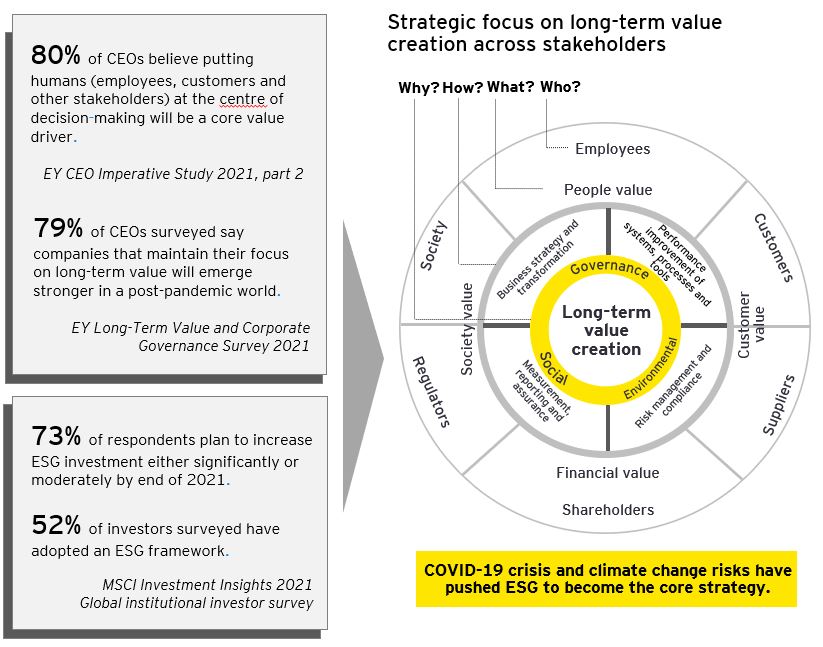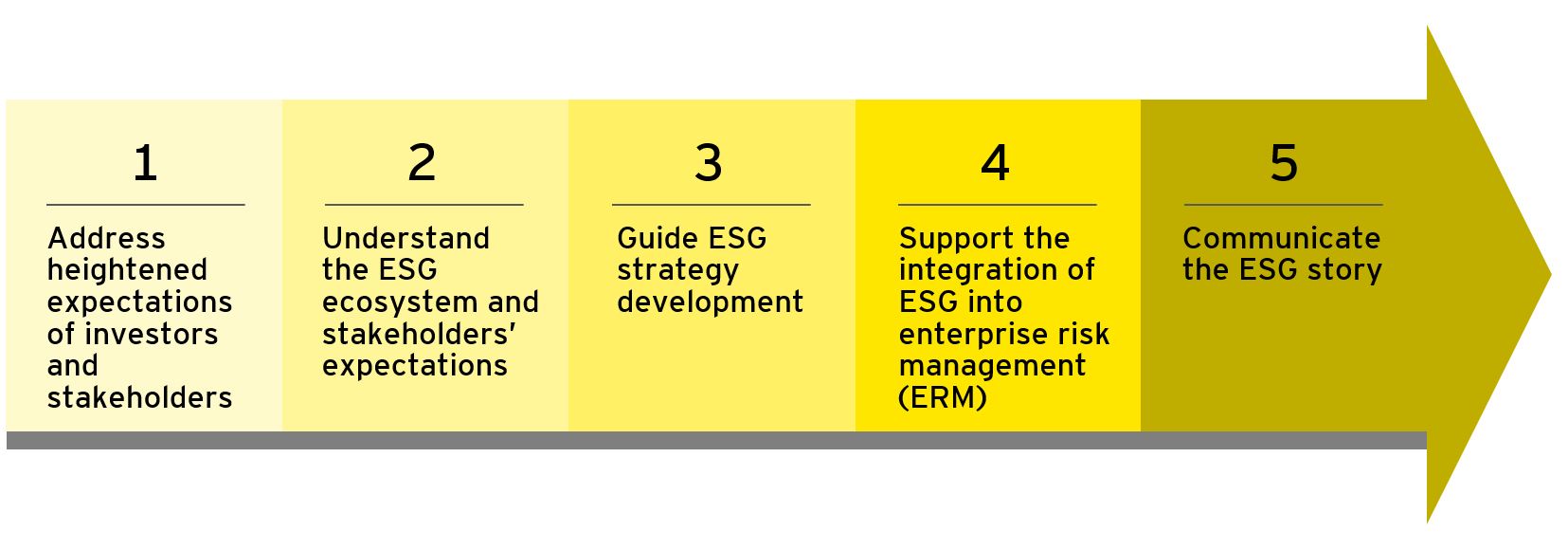
Re-modelling strategies with ESG
Today’s new normal is characterized by heightened public concerns about environmental, social and governance (ESG) issues and increasing demands by institutional investors, financiers, buyers and stakeholders – boards, employees, customers and communities - for organizations to deliver and step up their ESG responsibilities.
The recent 12 months have seen ESG gaining traction as a core strategy to reset business models and restore not just short-term and medium-term resilience but also build long-term sustainability.
Further, recent updates in the Malaysian Code on Corporate Governance 2021 (MCCG 2021) have highlighted the urgent need for boards and senior management of public-listed companies to manage ESG risks and opportunities.
ESG, a core strategy to build resilience and sustainability
ESG priorities are focused on sustainability, corporate responsibility and their material financial impact on an organization’s immediate, medium-term and long-term value. The strategic priorities and objectives of the three ESG pillars include:

To navigate a new normal of disruptions and challenges, ESG is the organizations’ moral compass to re-model business strategies whilst exploring new business opportunities. Mainstreaming ESG can strengthen organizational resilience and build long-term value and sustainability.
What are CEOs’ and investors’ new ESG perspectives?
The COVID-19 crisis and climate change risks have pushed ESG to become the core pivot strategy in resetting business models. Major institutional investors are prioritizing ESG factors in their investment selection and portfolio allocations.

It is time to shift sustainability from a reporting-led conversation to a value-based narrative and turn sustainability into a business opportunity. Aligning to ESG requires integrating ESG pillars into strategic planning and business operations, in tandem with board oversight and senior management focus.
What is the ESG regulatory focus for Malaysia?
Malaysia’s regulators are increasing their attention on ESG. The Securities Commission (SC) has issued the MCCG 2021 (28 April 2021) with significant updates and Bank Negara Malaysia (BNM) has released the Climate Change and Principle-based Taxonomy (30 April 2021) to guide financial institutions (FIs).
- MCCG 2021: SC’s new and enhanced practices include the urgent need by boards and senior management to jointly manage material ESG risks (including climate risks) and opportunities. Among the recommended corporate governance practices are the setting of a company’s sustainability strategy, priorities and targets, as well as stepping up on sustainability reporting and relevant ESG communications to internal and external stakeholders.
- BNM’s Climate Change and Principle-based Taxonomy (CCPT), aimed at encouraging the adoption of ESG principles in FIs, complements the Value-based Intermediation Financing and Investment Impact Assessment Framework (VBIAF) Guidance Document. The VBIAF sets out ESG considerations in the governance, business strategy and operations, reporting and risk management systems.
How to strengthen board oversight of ESG
COVID-19 disruptions, accelerating “new normal” transformation, stakeholder capitalism and concerning climate change risks have elevated ESG to become a strategic business imperative. Boards can strengthen ESG oversight to build company resilience and unlock long-term value creation through the consideration of five (5) actions:

To maintain competitive advantage and stay ahead of the curve in our rapidly changing ecosystem, businesses need to continuously innovate solutions to address the specific sustainability concerns of stakeholders and to drive a fit-for-purpose business model.

